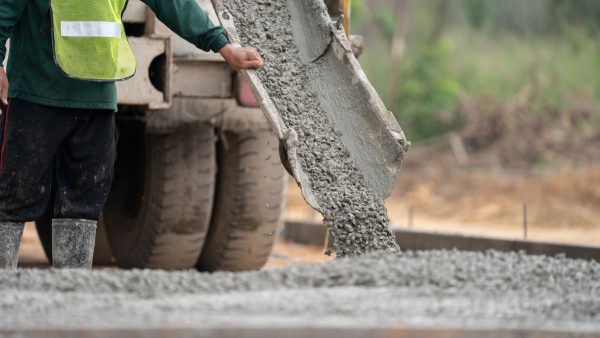Unraveling the mysteries of concrete

Concrete is a foundational part of construction, but most people don’t understand how it’s made or how it works. Here, we’ll explore more of the fine details of concrete to strengthen your understanding.
The composition of concrete
Understanding the role of cement, aggregates, and water
- Aggregates – granular geological materials like sand, crushed rock, or gravel. Aggregates act as a filler, which allows for less use of cement and water, but they also contribute to the compactness and mechanical strength of the concrete. Concrete is usually made with a mixture of coarse and fine aggregates.
- Cement – forms a paste that glues all the elements together when mixed with water. Some types of cement need to harden in dry conditions, while others can harden regardless of the surrounding moisture.
- Water – needed to create a paste with cement. Too much water reduces the strength of the concrete, and too little makes it unworkable.
Chemical reactions in the setting and hardening process
Concrete hardens through hydration. When water combines with the cement, hydrated compounds are formed, which helps the concrete harden from a liquid into a solid.
The impact of admixtures and additives
Chemical admixtures are used in concrete to:
- Accelerate the rate of strength development
- Reduce the amount of water needed
- Reduce the required water and increase the fluidity of the concrete
- Retard the rate at which the concrete sets
- Slow corrosion of encased steel
Concrete additives are used in concrete to:
- Control setting and hardening
- Give a more consistent concrete behavior
- Increase the longevity of concrete
Differences between various concrete mixes
The three most common concrete mixes are:
- All-purpose concrete mixes
- Fast-setting concrete mixes
- High-strength concrete mixes
Concrete production techniques
Batch mixing versus continuous mixing
- Batch mixing is a sequenced process where the ingredients are added and then mixed.
- Continuous mixing is where ingredients are continuously added and mixed simultaneously.
Four ways to pour concrete
- Wheelbarrow
- Concrete chute truck
- Excavator bucket
- Concrete pump
Concrete curing
This is the process of maintaining moisture and temperature consistency to help with hydration.
Concrete curing methods include:
- Chemical membranes
- Water cure
- Waterproof paper or plastic film seal
- Water retaining methods
We use a broad spectrum of concrete applications to repair and restore commercial buildings. Contact JK Industries today for our help with yours.
